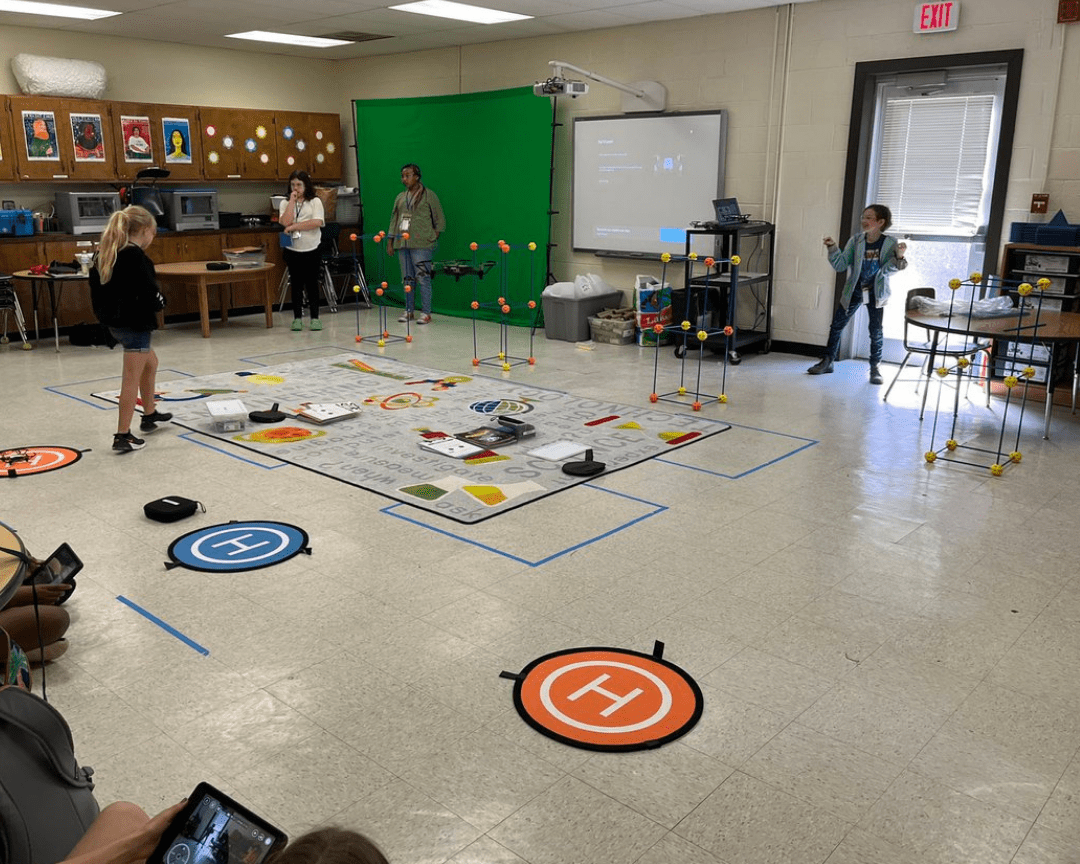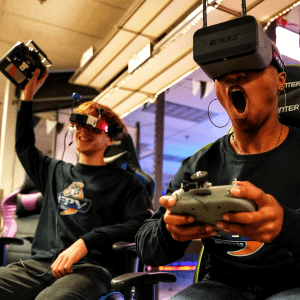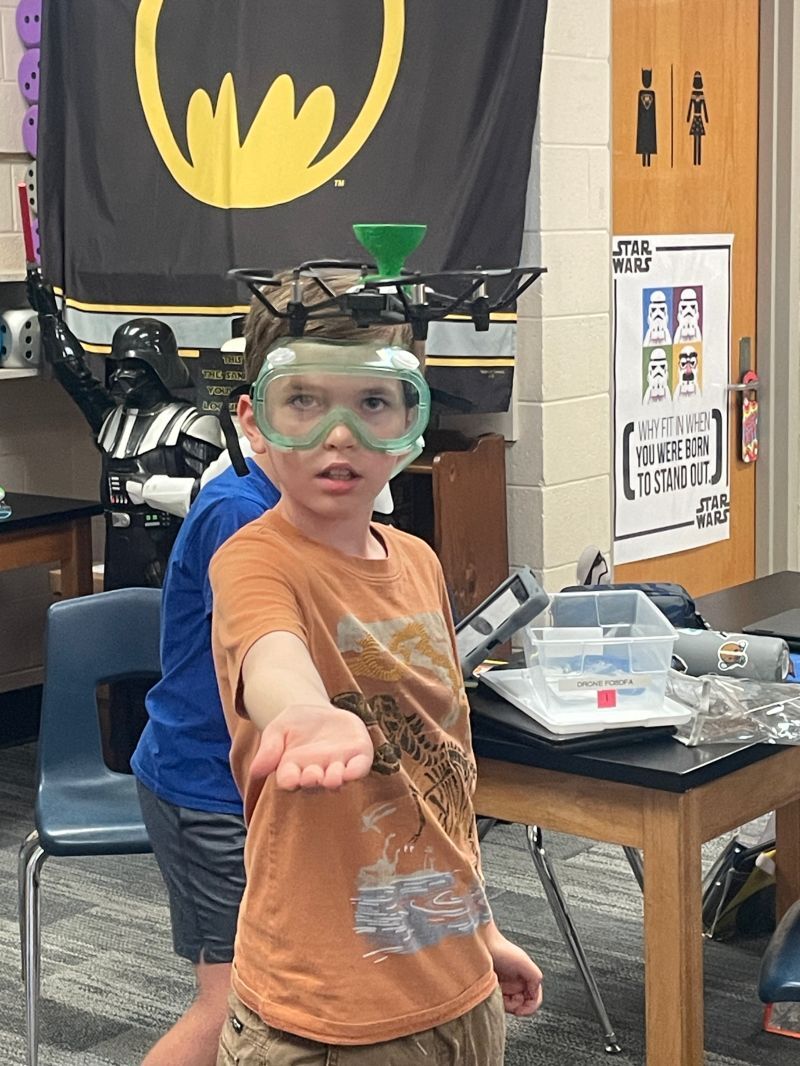Here’s what drones are not:
- Just toys
- Trivial
- A distraction
Drones have become an incredibly valuable – and exciting – way to engage kids in STEM learning. Tying drones and educational standards together is how the effectiveness is amplified, and kids get truly hands-on classroom experiences.
It’s important that anyone introducing drones into a classroom understands how to make this important connection (between drones and learning standards). This article will break down how drones are a powerful tool in education, and how they can support the learning outcomes you want.
Learning Standards and Drones
Grades, learning assessments, standardized state testing— these are all familiar evaluations within the educational system today. We all want kids to learn, and learn well, no matter what their background may be. Indicators of learning have varied over the past few decades, and as technology advances every day, education is at a crossroads.
Even before families began to see the real educational impact COVID-19 had on their kids, core subject scores like math and reading were of concern to educators in the U.S. Teachers and national leaders carry on an ongoing conversation: what can we do to help kids learn?
Teachers have to tick all of the boxes (reading comprehension, math, science, social studies, etc.). But we also want kids to be empowered and equipped for their futures. I’m not alone in believing that education in the U.S. is at an inflection point, and STEM (or STEAM) skills are the future.
Because teachers are already being called to meet STEM standards, I’d suggest to you that drones are a powerful way to do it. You can use drones in the classroom to meet educational standards and max out student interest and engagement.
Drones in Elementary Education
Using drones in elementary education is powerful, and here are a few illustrations of how drone lessons meet learning objectives in various subjects.
Math
Drones can be useful tools to teach mathematical concepts. Students can learn how to construct, measure, and program in groups or on their own. Teachers can have students fly a drone from one spot to another and measure the distance. They can teach programming and fractions through similar exercises that challenge students to think mathematically.
Social Studies
Climate, ecology, and social sciences are disciplines that adopted drones early on. In school, drones can be used to teach map reading, sample collection, and similar skills. Drones are a great way to show relevance when studying jobs in the community and economics, both of which are important to meeting social studies standards at the elementary level.
Science
Drones inspire kids to form a hypothesis and practice the scientific method. Drones can also be used in simulations associated with monitoring water quality, animal population dynamics, plant growth, and forces and motion-related standards. With the ability to see, measure, and compare data in real-time, experimentation is encouraged in new ways.
How Can Teachers Use Drones to Meet Educational Standards?
Here are some additional, out of the box ways that drone programs meet educational standards.
Present Collaborative Experiences
Getting kids involved with group projects can be exciting, fun, and competitive with the introduction of drones. With educational drone kits, small groups can build, navigate, and record their findings with cutting-edge technology that is both exciting and sophisticated.
Develop Soft Skills
In addition to teaching concepts in physics, math, or computer science, drones present soft skills, including:
- Social intelligence
- Problem-solving
- Perseverance
- Question formulation
- Teamwork
- Creativity
- Leadership
An interactive drone program can build “people skills” that can’t be taught through textbooks.
Learn from Failure
Fear of failure prevents growth. Failure is a chance for students to learn and retest. Using drones, children can push themselves to view a crash-landing as normal, then pick up their project to try again.
Display Constructive Communication
Teaching drones lets teachers challenge themselves with new instructional processes. New approaches give educators a chance to enhance their skills in scaffolding and similar pedagogical approaches, as well as modeling all types of communication.
Genuine Interest in STEM Concepts
Early exposure to STEM subjects opens doors for students to pursue related fields as they move into higher education and, eventually, start their careers. Drone education in elementary school ignites a love of STEM in young learners who may have otherwise never have known the possibilities in these growing fields.
Learning that aligns with state standards is essential, but so is instilling a lifelong love of discovery. Drones meet both of those criteria satisfactorily, creating STEM-rich learning with real-world application.
Drones for Educational Use, With a Legendary Twist
State standards are meant to measure student performance, ensuring they attain a certain level of subject mastery in their educational journey. Using interactive objects like drones is one way teachers can motivate students to take ownership of their learning.
Drones can be used to equip kids with a problem-solving approach to the world:
- There is a problem
- I can question this problem
- To discover answers, I’ll make a plan and test a solution
- There are tools I can use to redesign solutions & there are other people I can work with
- Problems can be solved.
The conclusion they’ll reach? “I am capable.”
In the world of Drone Legends, we believe that inside every child lives a Legend. If kids can internalize this idea early on by feeling empowered at school, it will last a lifetime.
When that mindset is applied to any subject— any situation— just imagine what challenges students will overcome.
Educational Standards Today
Every year, the National Assessment of Educational Progress (NAEP) conducts “the nation’s report card”. In 2019, their data showed that at best, only 40% of fourth-grade public school students were meeting math proficiency standards. For 12th graders, that percentage dropped below 24%. When it comes to reading, the percentage of primary school students who met basic standards was significantly lower than 1992, and even lower than the prior year.
Teachers are overwhelmed. They face new demands for online and hybrid lessons, while trying to keep up with ever-increasing emphasis on STEM learning.
The answer is not just to keep doing the same thing, but to open up to a world of emerging tools and technology to support student success. Drones meet educational standards, and breed curiosity, challenge students, and encourage resourcefulness. Interested in seeing what a drone education curriculum can do for your students? Reach out to Drone Legends to learn about bringing the magic of drones to your classroom.
About the Author: Kim Collazo is a well-known Digital Integration Facilitator, STEM teacher and trainer, program director, author, and more! Connect with Kim on Twitter @kcollazo, on LinkedIn, and head to Amazon to buy her book, Emersyn Blake and the Spotted Salamander!




